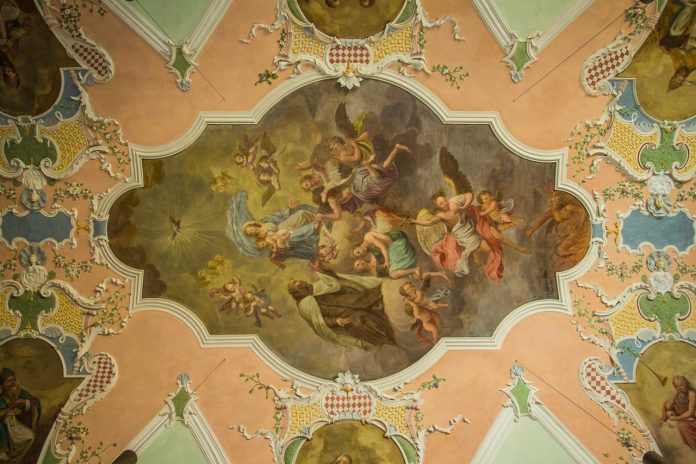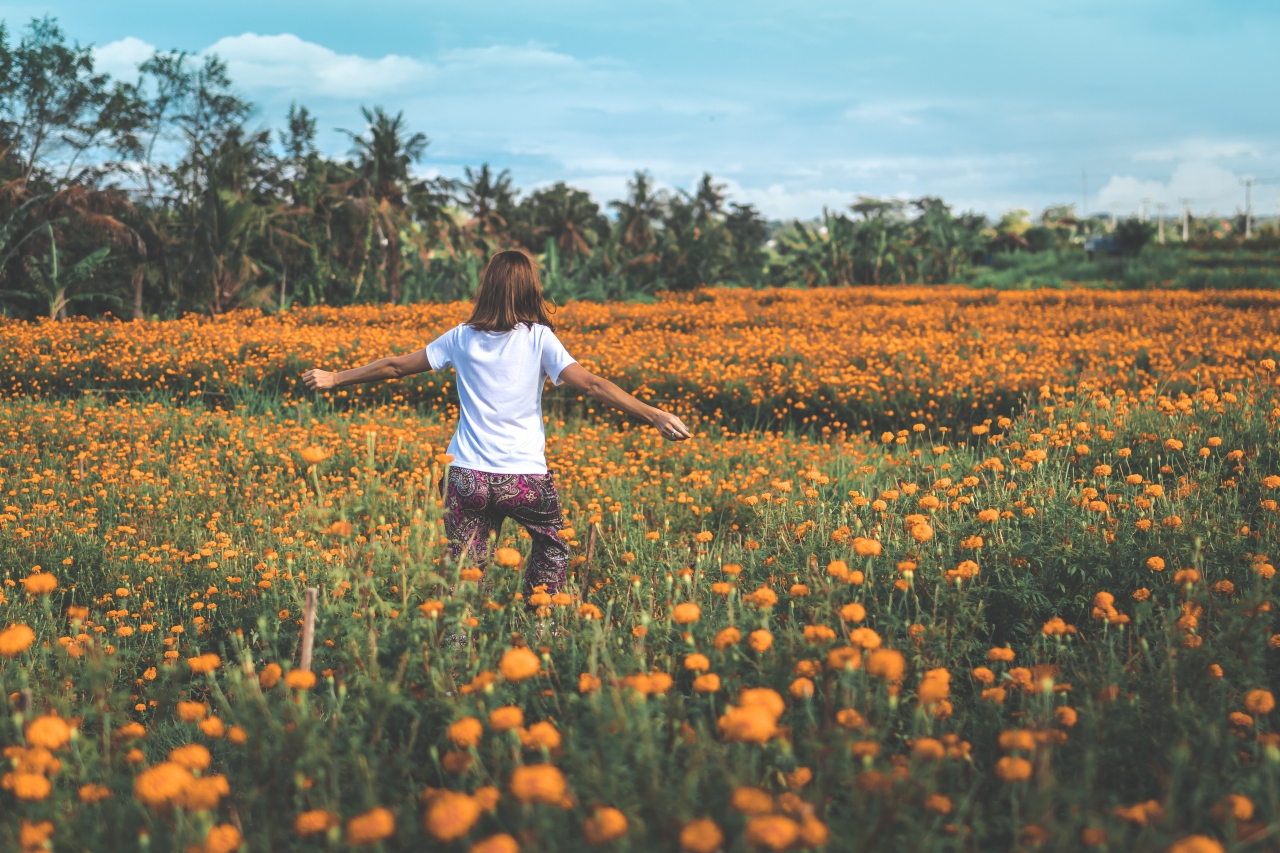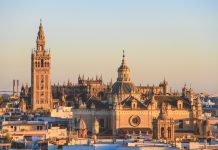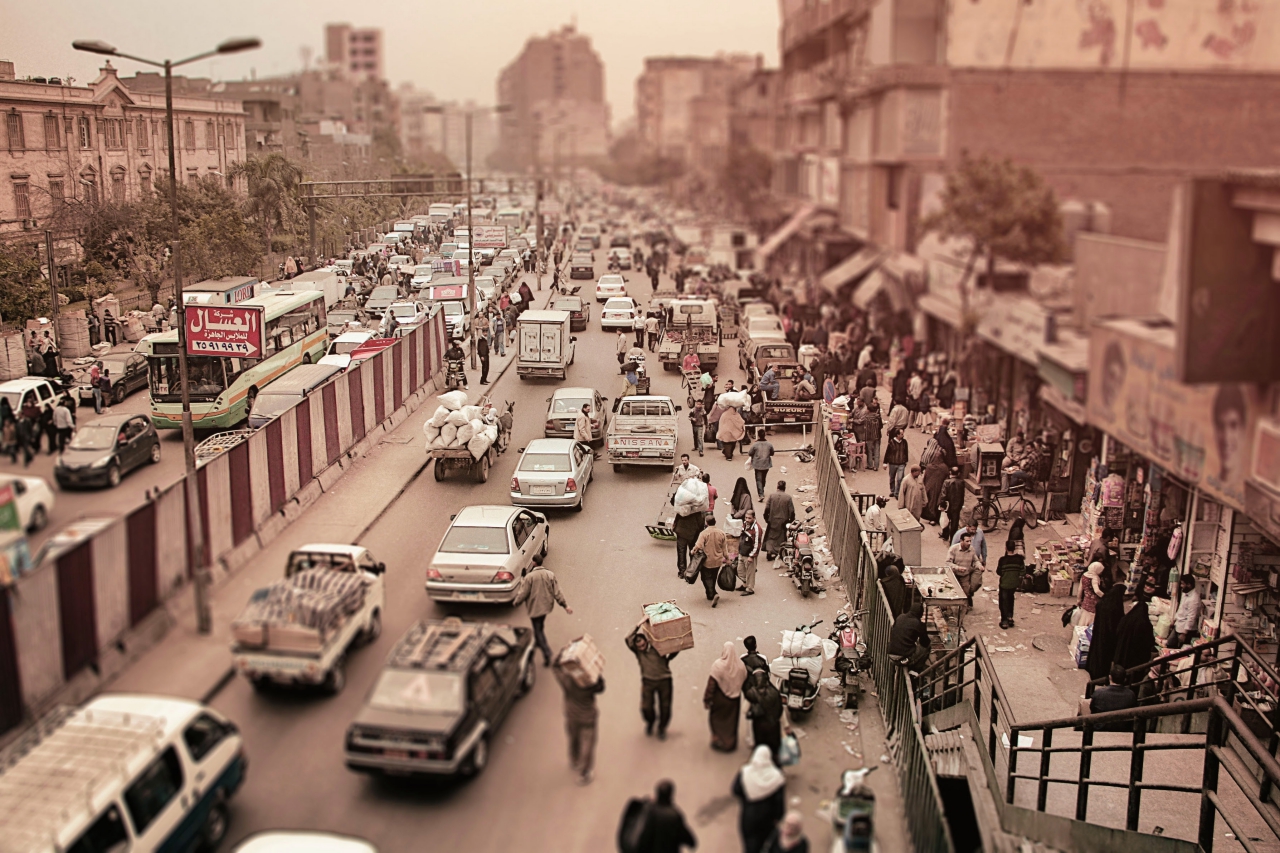Sacred artist David Troncoso paints in the Renaissance style with DaVinci, Michelangelo, and Rafael as his guides. His art, he says, draws him closer to God and has deepened his prayer life.
Troncoso, 35, a some-time resident of Long Island, produces large oil paintings with gesso and frames he makes by hand. When not at his physical studio in Kingston, N.Y., he travels and works from a camper van, which he renovated during the pandemic.
His dedication to the daily craft of producing art led recently to a 2nd place award in the Catholic Art Institute’s Sacred Art Competition. The winning piece? A dramatic depiction of St. Michael slaying the devil on a golden background in a frame he built from scratch.
Troncoso was featured on BYUtv’s series artFUL earlier this year, a series, which according to their website, is “about the inner workings of the creative spirit and how personal faith influences artists and their art.”
CNA had a chance to talk with Troncoso about his art, his faith, and his plans for the future. The interview has been edited for length and clarity.
How did you discover art? Is it something you’ve always done or did you find it later in life?
I’ve always been drawing, ever since I was a little kid. I loved drawing Looney Tunes, and from there, I went to superheroes and comic book characters. I was constantly drawing portraits and making comic books. Then, as I got older, I learned more and more about artists of the past, and eventually what it means to be a renaissance artist. I wanted to learn from the best.
What has been the most meaningful experience in terms of your training as an artist?
The most meaningful was that I studied at the Grand Central Atelier in New York City and that’s where I really learned how to refine my drawing technique to be more realistic. When I left there, I started going to all the museums in the city, especially the MET. I would spend every day copying and sketching old master paintings and drawings, and then do an exact replica of the paintings from the museum.
What do you find beautiful or intriguing about Renaissance art?
There’s many things; I look at it from so many aspects. First, there’s the craftsmanship involved, and how long it takes to make these great works of art. I know all the time that the artists put into it to learn anatomy, and how to draw correctly, how to paint forms. They studied for years and years under their masters, so there’s just so much craft and technical knowledge that I love about it.
Then, there’s the colors that I love that you maybe don’t see in contemporary work. Then, what the paintings are actually made of — like the wood — all these paintings start from freshly dried wood and glue to make a panel. Then, you make the gesso out of rabbit skin and powdered pigment. You’re making it from scratch, you even make your paint. I like the idea that everything you are doing, you are making it yourself.
Then, also, it’s the spiritual aspects of it. I find, in these paintings, they’re searching or they speak about higher things that contemporary work or modern work doesn’t really do.
That actually leads into my next question: Would you mind telling us a little bit about your personal faith journey and what that means to you?
It goes along the same lines as I discovered Renaissance work. I became obsessed with wanting to make Madonnas, and at some point, I had to question, “Why do I want to make these beautiful paintings of Mary or Christ?” and it just led me down the path of questioning my spirituality and religion. I learned more and more about being a Catholic.
The more I learned about Renaissance work and these Christian symbols, I began to pray more and pray to be able to paint beautiful things or to have beautiful ideas. It led me to, in the morning before I start, I would pray and ask God to guide me to make something beautiful for him.
My artwork and my faith is so wrapped up into each other, and it’s this very personal experience. I have this feeling that your creativity, your imagination, it comes from the divine. It doesn’t come from this world. It comes from the heavens. So, as an artist, it’s like God speaking through you as a medium, and that’s how I like to think about it.
Have you ever faced any kind of resistance or misunderstanding when you tell somebody that you enjoy painting religious art?
In the art world, I never feel like I really fit in. I never wanted to be an artist where I’m talking about myself or my ego. I never wanted to be that artist or “this show is about me.” I always wanted to make work for beauty, for God, for higher aspirations.
The art world today, I don’t understand it. I can’t connect with it. Medieval Renaissance all the way up until the 19th century were, for me, the best painters, and they were all producing work about and for the Church. You had beautiful narrative paintings about biblical subjects. At some point, society turned away from history, religious narratives, and beautifying spaces. It’s moved away from trying to talk about the divine God, our spirituality, and our place in this world.
What does a typical day look like for you in your line of work?
I like to wake up early, have my coffee, and get into the studio early. My studio is in this old building from 1742 — it predates the Revolutionary War — and it has beautiful Gothic windows. It almost feels like I’m in a monastery. It’s so quiet. As soon as I go there, I feel like it’s this very sacred sort of space. I like to say a prayer, focus, and get into my zone.
Every day for the last seven or eight years, I’ve listened to the same music, these classical composers. I start the day, every day, with John Field’s “Nocturnes,” and then it eventually leads into baroque and medieval music.
I’ll work on a painting for a few hours, and then I’ll have to put it aside so I don’t overdo it. Then, I might work on a new idea or finish up some old ones. I’m also a woodworker, so I build and carve all the frames that I have for my artwork. So, some days will be spent in my wood shop, carving and building elaborate frames that I gesso and guild myself as well.
Beyond your studio, what does home look like for you?
Well, I’ve been living in a camper since the beginning of COVID. My fiancé and I renovated a 24-foot camper and have been living in it and traveling in it. I have a mini studio for when I’m on the road. It’s so much fun, it just felt like the time was right. There’s so much of the country we want to see. We got it [the camper] from our aunt, gutted the inside and rebuilt everything, so it’s very homey inside.
We park it at campsites or at family’s property if we’re in upstate New York. If we go down to Long Island, we park it at my parents’ house. We spent the whole summer at the beach. I can bring portable tools with me while I’m doing that, and I use hand tools as well, so I don’t need any power for that.
I’m jealous! Of all the places you’ve traveled, which has been the most inspiring for your creativity?
I don’t know if it’s because I grew up by the ocean, but I’m drawn to the sea very much. We love to go up to rocky, treacherous coastlines. We spent an amazing time up in Newfoundland for a few weeks, and that was an incredible experience with its rocky coasts. Also, Iceland was incredible. It was just out of this world, it was just such a special, amazing landscape. Rocky, stormy coastlines really gets me, and I feel that power of nature. When you feel that power of nature, then you also feel the power of God in a way.
In thinking a little bit about the many years you’ve produced art, have you ever come across a mental block or a time when it was really challenging to create? If so, what was that like?
Yeah, I feel like I go through that all the time. Being an artist, it’s like one of those things you just accept. It’s like this rollercoaster — sometimes you’re producing a lot of work and you feel this creative spirit. There’s new ideas coming to you.
Then, you work on a project, but when the project is over, you can fall into a depression sometimes. It’s almost like being in a relationship; you’re in a relationship with this painting, with this idea, and then once you close the book on that, it’s done. So, you could feel empty at times.
It happens a lot, but once you get into those lows, I think those are the moments when you question things more or you question life more. It’s a time to rethink things. It could be a daily thing, it could be monthly, but it happens all the time.
What are some ways or techniques you have to break through those creative blocks?
I find meditation and prayer works a lot, and then sometimes I just have to do something completely different from art. I’m really into vintage motorcycles, so something like that where you get away from your art world and you go onto something different. I’ll get one, strip it apart, take the engine apart, gut it, and clean it, and it’s sort of meditative. All the parts have to go back in the right place, and all your hard work when you try to start it up, and it starts up. It’s an amazing feeling.
Also, I play a lot of instruments, so that’s something I might do. I’ll grab a banjo, ukulele, or a guitar and strum on that.
Of all of the different pieces of art that you’ve created, what is the one that stands out the most to you or that you’re most proud of?
I’d say the most proud of is this one I just finished up, the altarpiece I’ve been working on for the last few years. That’s sort of the accumulation of everything I’ve learned, from everything I’ve studied at school, classical painting, old master works, and woodworking. I put a year of planning into it, making blueprints and sketches and bigger sketches. I built the panel that you paint on. I got raw lumber from a lumberyard — I cleaned it and jointed it, and learned how to glue up a large panel and made everything from scratch. It was everything I’ve been striving for as an artist.
The large piece you mentioned was temporarily installed in a church. What was it like to have a piece like that of yours installed in a sacred space?
I didn’t even know it was going to happen. When the artFUL crew came to film, I had the piece set up in my studio. They said, “No, this really belongs in a church,” and they worked some magic. They called up the church and they said we could install it there for a bit. We got a U-Haul and carried it around the block.
It was all set up — they had the lights on, and I went into the church to see it. I became emotional. I didn’t realize it would affect me that much. I get hard on myself about my own work, but seeing it in a church was like it was at home. It was everything that I had been working so hard for all these years. It was a very special moment.
Tell me more about artFUL. I heard they just showcased your work. Can you tell us about how you got connected with BYUtv for the episode?
I got an email one day and they were like, “Hey, we really like your work and we’d love to see if you would be a good fit for the show.” I had a phone interview, and a couple weeks later, they said, “We’ll be there in a month.”
It was such a fun experience. They filmed for about two and a half days, from 7 in the morning to 9 or 10 at night, some interviews and some art. They got a taste of my life and whatnot. I’m a very private person, so it was very out of my element, but it was such a cool experience.
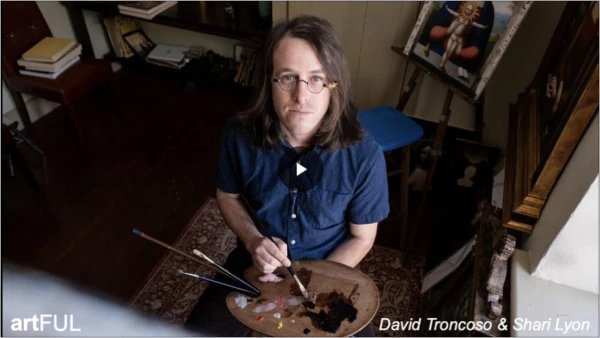
What advice would you give other budding artists, or perhaps, a younger David Troncoso?
Definitely study the old masters to the fullest — see what they did and try to learn from them. Then, the biggest thing is perseverance. I failed so many times and on so many projects, and I tried to give up art many times. You are an artist and you can’t give it up. Don’t doubt yourself, keep working hard, and have faith.
What’s next for you? What other pieces can we expect to see in the future?
I’m working on a whole new body of work right now, so that’s pretty exciting. There’s a few Virgin Mary commissions, which will be paintings and frames, and some other work that incorporates a lot of woodworking as well.
I’m also starting to work with the architects and designers to make paintings for churches and cathedrals. My main ambition is to keep connecting with people and to keep making beautiful things for the church.



